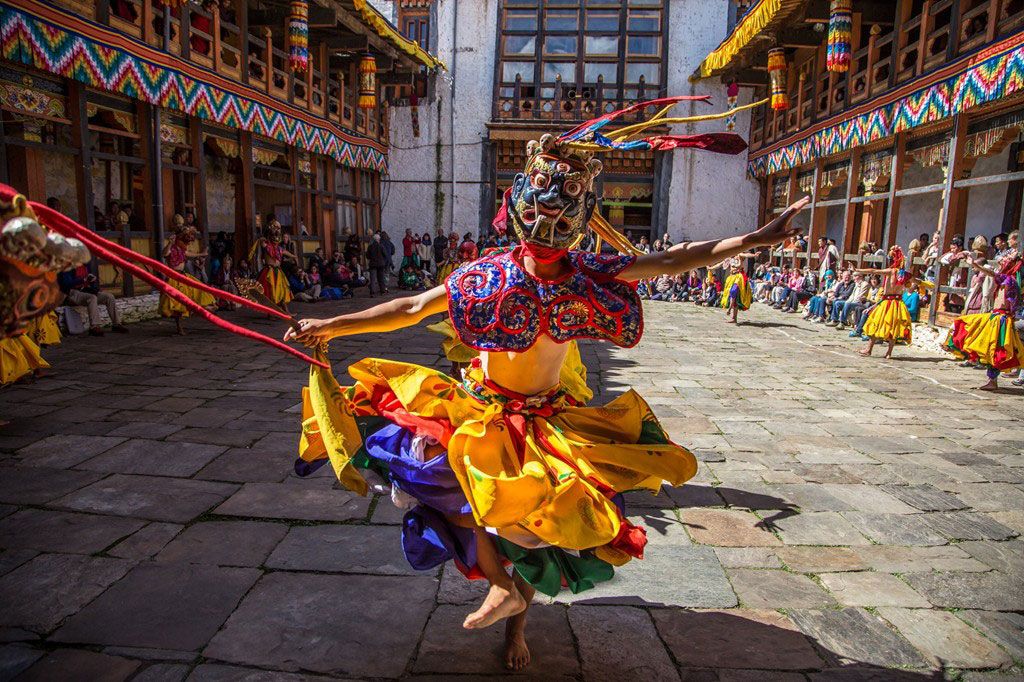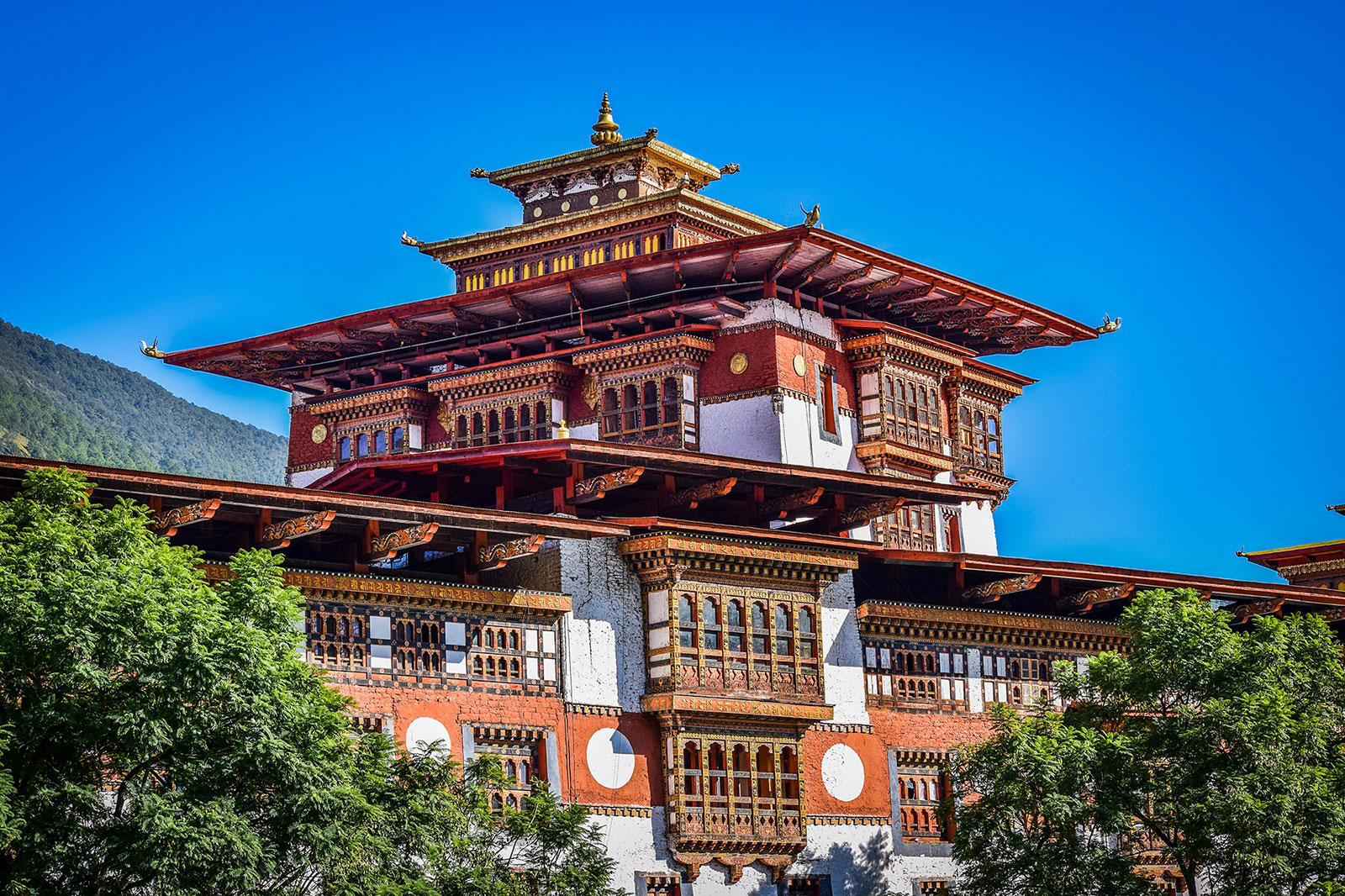Nabji Korphu Community Based Trek or Eco tours to Bhutan are the trek in the central Bhutan. It is towards the south of Trongsa and it has the advantage of seeing the best of flora and fauna as it falls in the tropical region.
Note: The trekking tour program does not include the total duration. Please select the trek of your choice and contact us. We will send you the program and duration. You can also combine the trek with the cultural tours. The trek which is less than five nights is the cultural trek that is done with the cultural tours.
Duration: 6 days
Maximum Elevation: 1500m
Highest Camp: 1500m
Standard: Easy
Best Seasons: October-April
Start: Tongtongphey, Trongsa
Finish: Reotala, Trongsa
Day 1: Tongtongphey – Jangbi village
(Distance: 7-9.5 km, Duration: 3-4 hours, Altitude range: 1000-1350m)
After an early breakfast at the hotel, you could afford some time to strut around the Trongsa town, combining it with a visit to the Dzong and also the Ta Dzong. The latter is going to be upgraded into a museum, which will definitely captivate a visitor with its myriad collections. A 2 hour drive from the town along the Zhemgang highway brings you to Tongtongphey, the start of the Trek. You could also augment your itinerary along the way, with a visit to Kuenga Rabten palace, an important heritage in Bhutanese history. After gathering ample information about the trek from the information booth, the village guide steers you down to the Mangdi river where you cross a suspension bridge. Unless you have a strong proclivity for ants and other ground creatures, it is almost impossible to miss out on Golden Langurs that are bountiful on this stretch. The first day brings you in contact with the Monpas who are believed to be the first inhabitants of Bhutan. A glimpse on their lifestyle further validates their ethnicity, coupled by mythical legends about their origins. The campsite in Jangbi stands on the valley sill, which offers a resplendent view of the Mangdi valley. If you are still left with some energy, you could audience yourself to a local cultural program, or better, partake in it.
Day 2: Jangbi village- Kudra village
(Total distance: 13-14.5 kms, circa 6 hours, Altitude range: 1350-1500m)
The morning allows you to further interact with the Monpas. Before you proceed, you could also pay a visit to the orchid garden that fences about 75 different kinds of orchids. The hike to Kudra provides a nuance of jovial atmosphere because this part of the trail meanders along the stone imprints of Guru Rinpoche’s footprints, dagger and phallus, festooned by stories that espouse Guru’s praxis. Lunch is served just before you arrive at Phrumzur, one of the villages of the Monpa communities, off the trail. You could also visit the village Lhakhang in Phrumzur and then proceed to the campsite in Kudra. En route, you traverse another small Monpa village called Lekpogang, after which, the campsite in Kudra is just an hour’s walk. The campsite offers a bird’s-eye-view of Nyimshong village and also the Zhemgang town.
Day 3: Kudra village- Nabji village
(Distance: 11-14 kms, circa 5-7 hours, Altitude range: 1500-1300m)
You wake up with the distant call of the Rufous-necked hornbill. This part of the trek is a collage of streams, waterfalls and thick forests that will give you an invigorating feeling of being out in the wild. The Great Himalayan Squirrel, Rhesus Mecaques, and small snakes are often spotted along the trail. Unseen but present, are Himalayan black bear, Red pandas, tigers, Clouded leopards and others. Upon arrival at the holy tree in Nabji, the people will give you a heartwarming reception. Nabji is a beautiful village where paddy fields seem to circumambulate the clustered houses. You could also hike to the community school and indulge yourself in game of football or volleyball, where children rejoice the presence of outsider athletes.
Day 4: Nabji village – Korphu village
(Distance: 9.5-13km, Duration: 2-3 hours, Altitude range: 1300-1500m)
En route to Korphu, the Nabji temple is located in the middle of the paddy fields. Inside, there remains a stone pillar on which Guru Rinpoche, while traveling through Bhutan in the 8th century, brought consensus between the warring kings: King sindha Gyelp of Bumthang, and King Noeche, by imprinting their thumbs on each side of the stone. A unique festival is celebrated sometime in early January at the temple grounds. Korphu is situated on a mountaintop at an altitude of 1500m. The most striking thing about Korphu is that the people exemplify hospitality almost treating you like ‘A King on accession to throne’. You have the option of being welcomed with a traditional ‘Chipdrel’ procession and a ‘Marchang’ ceremony, singing traditional songs of praise and wellbeing for new visitors. They also perform the traditional ‘Tashi Labey’ dance to bid you farewell. If you are interested, the villagers can explain and demonstrate and even allow you to participate in the quintessential Bhutanese games of ‘Khuru’, ‘Dego’, ‘Sok-sum’, and ‘Gee-dum’, all on the brink of disappearance. You could also pay a visit to the village temple that houses the sacred relics of Pema Lingpa, the famous ‘Treasure revealer’ of Bhutan. A local lunch could be provided in the village campsite which also provides a spectacular bird’s-eye view of Nabji and other surrounding areas.
Day 5: Korphu village – Nimshong village
(Distance: 11-12km, circa 4-6 hours, Altitude range: 1500-1300m)
The hike from Korphu to Nyimshong is the pleasant and arguably the best birding spot, which can boast a bird list of more than 395 species. The elusive Rufous Necked Hornbill has its nesting holes adjacent to the trail. The walk is mixed with waterfalls, streams and cantilever bridges. The evening brings you to Nyimshong, a village with its reticent architecture and lifestyle. The campsite is equipped with an amphitheatre. The women of Nyimshong have a penchant for singing and dancing and a cultural show would be ideal to express certain euphoria to end your trek. Of course this is optional.
Day 6: Nimshong village – Trongsa town
(Distance: 5-6km, circa 2 hours, Altitude range: 1000-1300m)
If you are lucky, the Golden Langurs will lead you to the exit. You descend down to the Mangdi river again to see some Herons and River-lapwings. An hour’s steep ascend to the road and your driver will drive you back to Trongsa.









